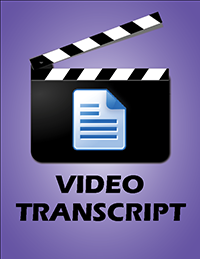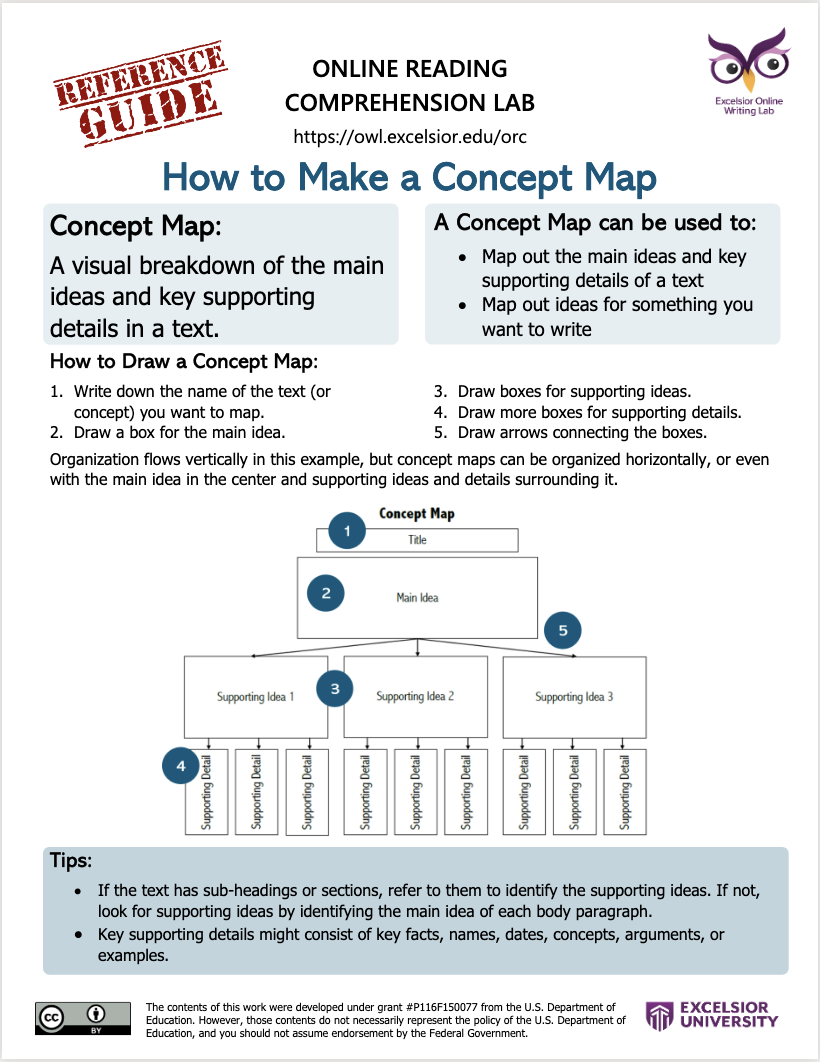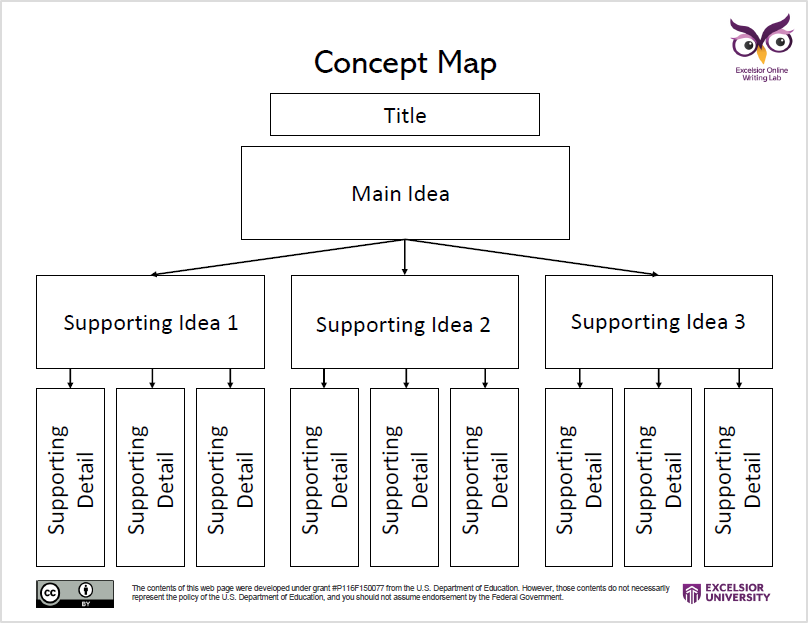The contents of this web page were developed under grant #P116F150077 from the U.S. Department of Education. However, those contents do not necessarily represent the policy of the U.S. Department of Education, and you should not assume endorsement by the Federal Government.
More
Learn how to create a concept map to visualize the main ideas in a text.
| 0:00 | Owl: Welcome to How to Make a Concept Map, an instructional video on reading comprehension brought to you by the Excelsior University Online Writing Lab. |
| 0:13 | A simple way to analyze a text is to break down important information, such as main ideas and key details, with a concept map. |
| 0:22 | Creating a concept map for a text is a great way to make the information available in a visual and easy to read manner. |
| 0:29 | You can also use this technique to map out ideas for something you want to write. |
| 0:34 | Mapping a text is easy. |
| 0:36 | Start by writing down the name of the text (or concept) you want to map. |
| 0:41 | Then, draw a box for the main idea. |
| 0:45 | Next, draw boxes for supporting ideas. |
| 0:48 | After that, draw more boxes for supporting details. |
| 0:53 | Finally, draw arrows connecting the boxes. |
| 0:58 | You can draw your concept map any way you like. |
| 1:01 | In this case, we organized our concept map vertically with the main idea on top and supporting details at the bottom. |
| 1:09 | However, you can draw your concept map horizontally, or even place your main idea in the center and surround it with boxes for supporting ideas and details. |
| 1:19 | Make your concept map as large as you need it to be in order to map out the text you’re reading. |
| 1:25 | In this example, we’ll map out a chapter on muscle tissue. |
| 1:30 | First, write out the title and summarize the main idea. |
| 1:35 | Then, summarize the supporting ideas. |
| 1:38 | If the text has sub-headings or sections, refer to them to identify the supporting ideas. |
| 1:44 | If not, look for supporting ideas by identifying the main idea of each body paragraph. |
| 1:51 | Finally, pull out and list key supporting details. |
| 1:55 | This might consist of key facts, names, dates, concepts, arguments, or examples. |
| 2:03 | When you’re done, you’ll have a complete map of a text’s argument. |
| 2:07 | That’ll come in handy the next time you need to write or talk about it! |
| 2:12 | You can download a Concept Map template here. |
| 2:19 | Thanks for listening to this instructional video on How to Make a Concept Map! |
| 2:24 | Visit the Excelsior University Online Writing Lab for more support with reading and writing skills. |
Materials from the following text were paraphrased in this video:
OpenStax College, Anatomy & Physiology. OpenStax College. 25 April 2013. <http://cnx.org/content/col11496/latest/>.
Explore more
Check out other great resources:



